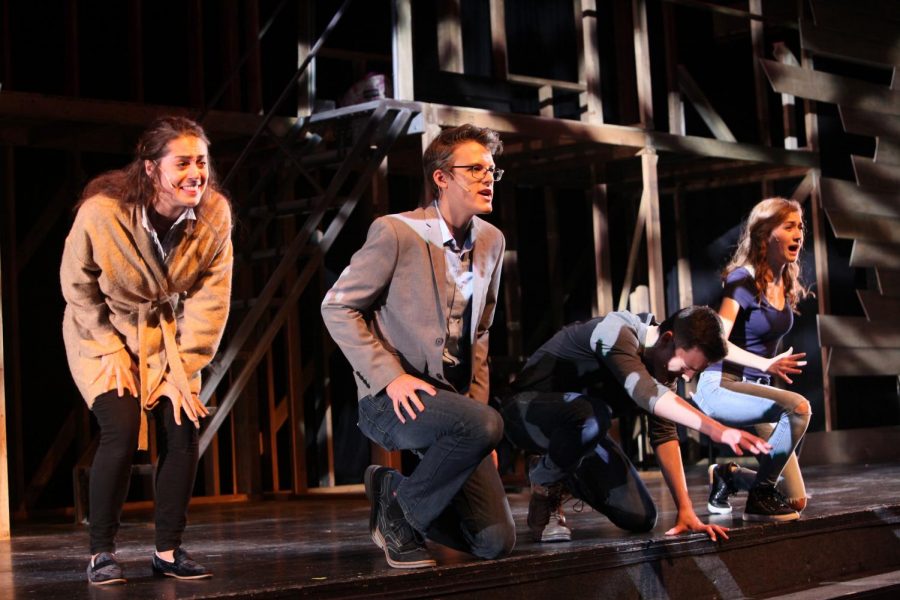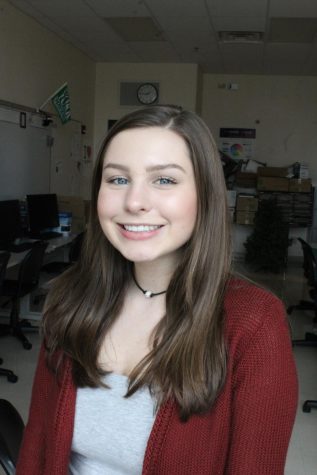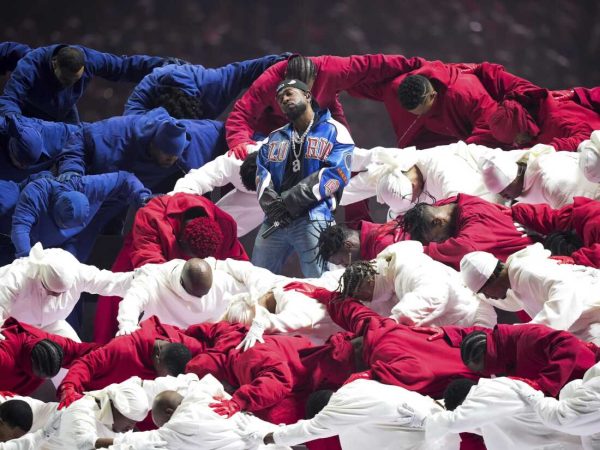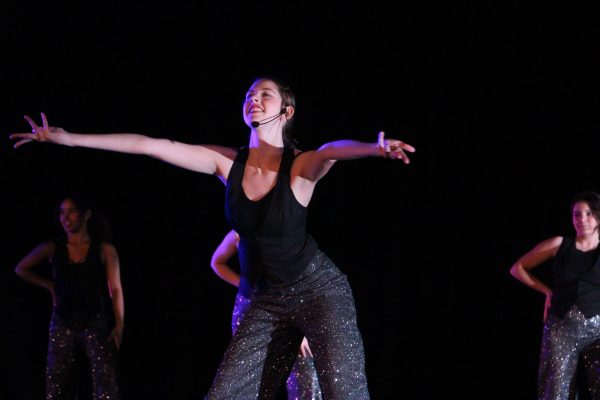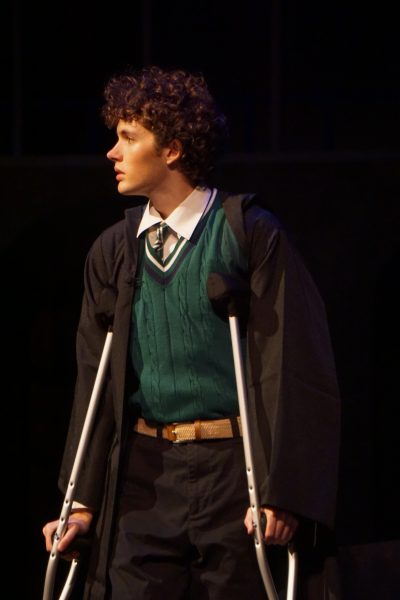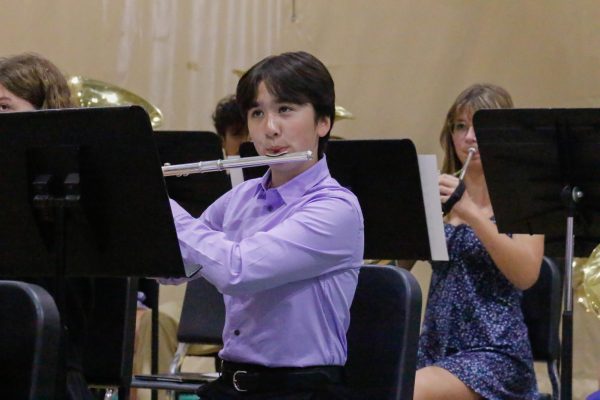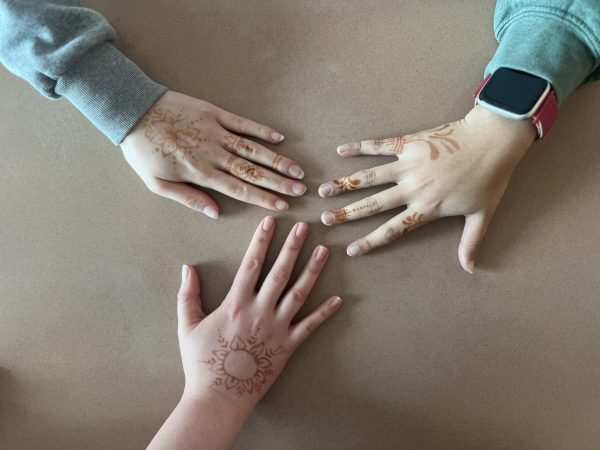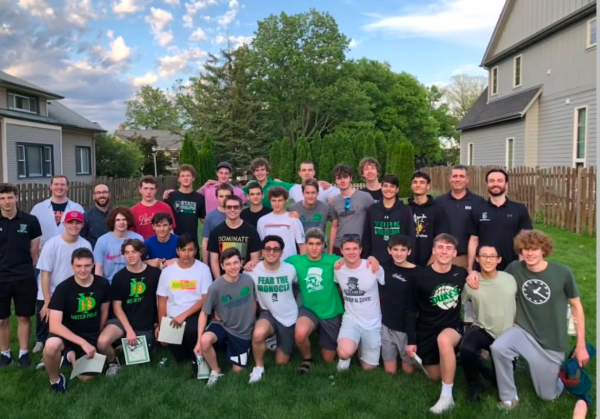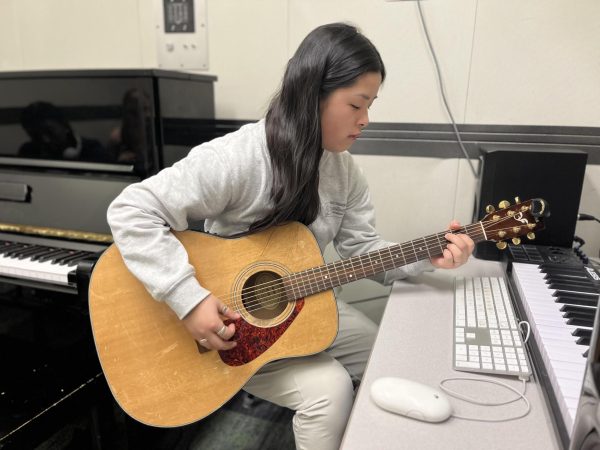York Drama presents “The Children’s Hour” and “Next to Normal” in the 2017 Fall Festival
York Drama Club put on two stunning performances over the weekend, “The Children’s Hour” and “Next to Normal”, which focused on perception: the theme of the York Drama 2017-2018 season. Perception is a way of regarding, interpreting, or understanding something. This year the shows will explore how perceptions can affect our lives and those around us.
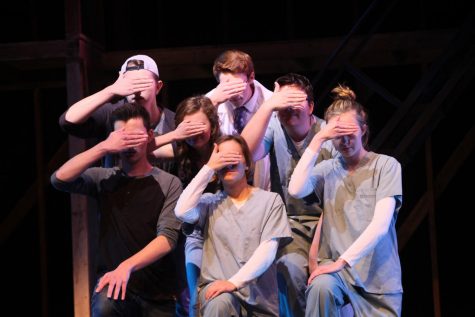
The cast of “Next to Normal” during the song “Who’s Crazy/ My Psychopharmacologist and I”
“Next to Normal”, which was named one of the best musicals of the 21st century, gracefully handles a dark and complex subject matter through its moving and brutally honest exploration into pain. It won the 2010 Pulitzer prize for Drama, becoming one of the only musicals to do so.
This contemporary family drama tells of a woman’s struggle with mental illness and the effects of it on her family. At the opening of the show, mother Diana (played by senior Carina Kanzler) seems to have an ideal life, happily married with two teenage children. But it soon becomes clear that, like most families, they are far from perfect. Diana has bipolar disorder, plagued with anxiety, mood swings, and delusional episodes that trace back to a family tragedy, and grow worse with time. During the course of the play Diana goes through a series of doctors and treatments in response to, and sometimes triggering, the ups and downs of her illness. Through the show, the cast and audience members got to learn about how mental illness can destroy a family.
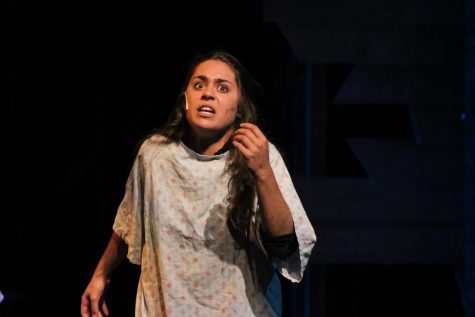
Senior Carina Kanzler playing her role of Diana Goodman in “Next to Normal”
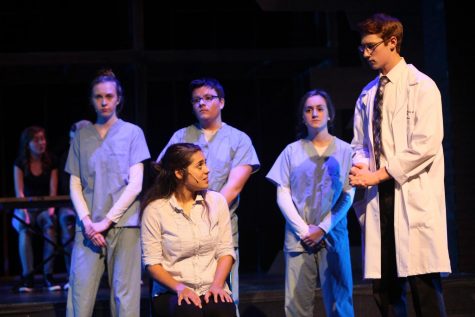
Diana (played by senior Carina Kanzler) being treated for her mental illness by Dr. Fine (played by junior Joe Brown)
Under the care of her primary doctor, Dr. Fine (played by junior Joe Brown), Diana takes medication, talks through her issues and problems, and undergoes the more controversial option of electroconvulsive therapy with Dr. Madden (played by senior Danielle Fite). Meanwhile, her husband Dan (played by junior Mike Bindeman) confronts his own confusion and depression; daughter Natalie (played by junior Erin Lee) deals with isolation, drug abuse, and a budding romance with a fellow music student, Henry (played by sophomore Sean Solem); and Diana’s dead son Gabe (played by junior Wilke Macariola) serves as an enigmatic character and Diana’s confidante- a link to a happier past. Gabe is an allusion that only Diana can see because of her illness.
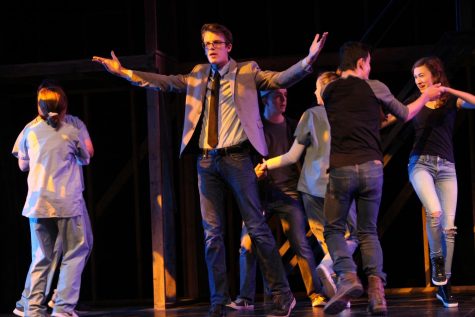
Junior Mike Bindeman (playing Dan Goodman) during a musical number.
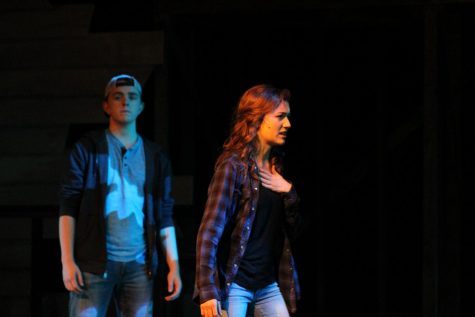
Gabe embodies a visual representation of Diana’s mental illness and many scenes show him having control over her, and audience members can see: every time he returns to the stage, it shows that Diana’s mental illness has returned. Though the family strives to establish some sort of normality, and each character seeks his or her own peace and happiness, the ties that bind slowly and inexorably unravel around them.
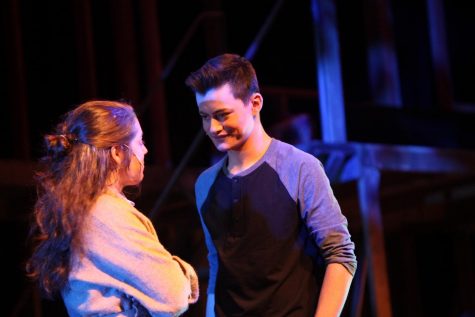
Junior Wilke Macariola gives a sinister grin whilst playing Gabe Goodman.
“Every character in “Next to Normal” has flaws, but more than anything, this family has been changed by the death of their child, and the struggle of a chronic and severe mental illness, with little hope to lead a normal life,” said director Rebecca Marianetti in her director’s note. “Natalie, the most honest of the family, tells her mom that she only hopes for “something next to normal”.”
“Next to Normal” left the audience shocked, in tears, and blown away. Considered a rock musical, much of the story is told through song. The interwoven melodies move the action back and forth among simultaneous scenes, as well as between literal and psychological realities. The musical is full of surprises, home-hitting realizations, bittersweetness, crushing defeat, and even a bit of sarcastic humor as well.
“The message you can learn is how much of a serious issue mental illness is,” said junior Jake Rehling, who played the Anesthesiologist in “Next to Normal”. “These two shows depict how real they are and people should not be dismissing mental illness.”
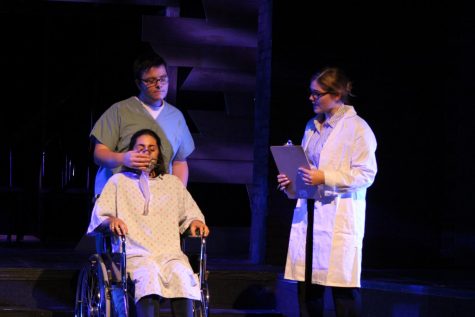
Senior Carina Kanzler (left) receiving medical treatment by the anesthesiologist played by Jake Rehling (junior) and the Doctor played by Danielle Fite (senior).
The other Fall Festival play along with “Next to Normal” was “The Children’s Hour”, a three act play centering around the message that words are powerful and that we rely on each other’s kindness and goodwill to maintain our reputations.
“A few words spoken in anger or defense, as we see in tonight’s performance, can take on a life of their own and roll over everyone involved, including the originator of the lie,” said director John Forsythe in his director’s note. “These words can change how we perceive each other, how we perceive ourselves, and how we perceive language itself. The very core of our existence can tilt on a few words. Careful how you use them.”
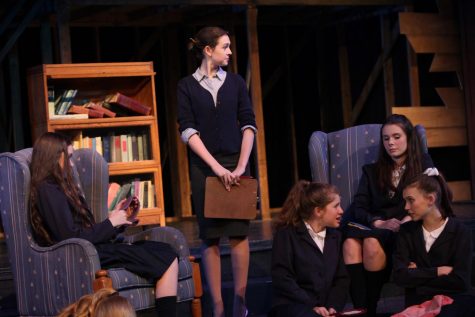
Teacher Karen Wright, played by junior Ellie Ryan, stands among her students in the opening scene.
“The Children’s Hour” is a drama set in the 1930s in an all-girls boarding school run by two women, Karen Wright (played by junior Ellie Ryan) and Martha Dobie (played by senior Madds Buckley) with the somewhat unwelcome help of Martha’s aunt, Lily Mortar (played by senior Katharine Bartosz). An angry student, Mary Tilford (played by sophomore Emily Walker), runs away from the school and to avoid getting sent back tells her mother, Amelia Tilford (played by senior Eileen King) that the two headmistresses have a lesbian affair. The accusation proceeds to destroy the women’s careers, relationships, and lives. Joseph Cardin (played by senior Elliott Degrace), Karen’s fiancé, questions her feelings, and leaves her after she explains that things will never remain the same between them after the rumor.
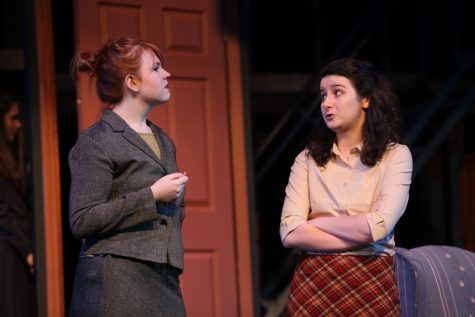
Martha Dobie, played by senior Madds Buckley, engages in an argument with her aunt, Lily Mortar (senior Katharine Bartosz) over her “unnatural” feelings about Karen’s upcoming marriage.
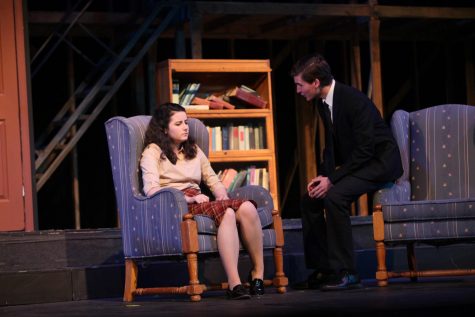
Joseph Cardin (senior Elliott DeGrace) confronts an irritated Martha (senior Madds Buckley), suspecting that she is unhappy about the change he brings to the lives of the two schoolteachers.
“Even though [“The Children’s Hour”] was set such a long time ago, it’s incredible to see the same ideas relevant today,” said junior and stage manager Evie Nudera.
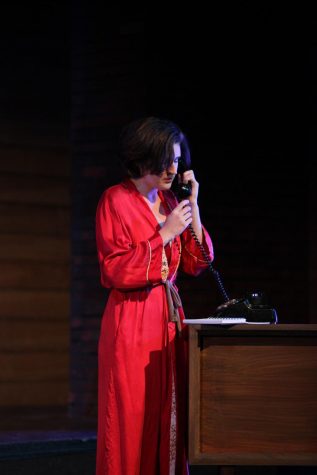
Amelia Tilford (senior Eileen King) calls Joseph Cardin, her brother, to tell him the news she believes she has discovered about Karen.
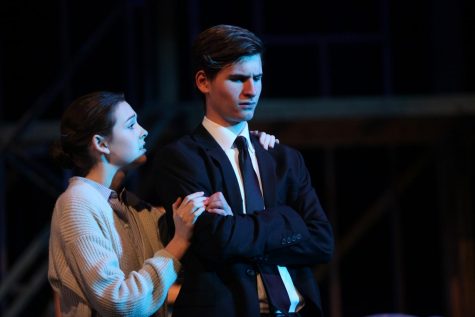
Karen and Joe, played by junior Ellie Ryan and senior Elliott DeGrace, are faced with troubles in their engagement over the course of the play.
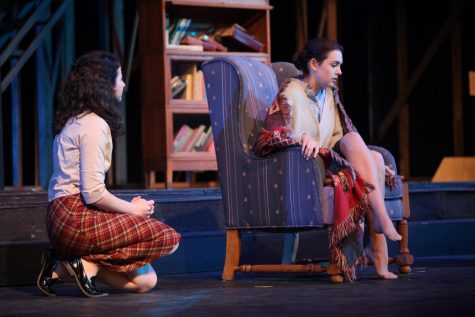
Martha (senior Madds Buckley) confesses her feelings to a disbelieving Karen (junior Ellie Ryan).
Impossible for them to live comfortably again, Martha eventually admits her feelings for Karen, proving truth to the rumor. Karen responds dismissively, saying that they never felt this way for each other. Martha continues, but Karen tells Martha they can talk about it in the morning. As Karen sits in the room, she hears a shot. Martha has killed herself. Shortly after, Mary’s mother, Amelia Tilford arrives to beg Karen’s forgiveness, since Mary’s lies were proven untrue but Karen explains to her that an apology is too late: Mary’s lies, together with the community’s willingness to believe and spread malicious gossip, have destroyed three innocent lives. Mary is a huge cause of the destruction that occurs in the show, which must be a difficult task for an actor to play such a malicious character.
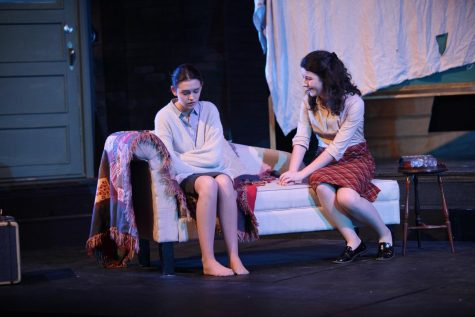
Martha (senior Madds Buckley) comes back into the living room to discover that Karen (junior Ellie Ryan) has left Joseph.
“Playing Mary Tilford has been really difficult, because she is pretty much the exact opposite of who I am as a person,” said sophomore Emily Walker. “It’s been a blast unleashing my inner rage, but I’m ready to stop hating everyone now. This being my first York show with more than one line, I’ve learned a lot about developing a character, as well as how to work with the directors and stage managers. I also had to learn how to memorize lines quicker than I ever have before!”
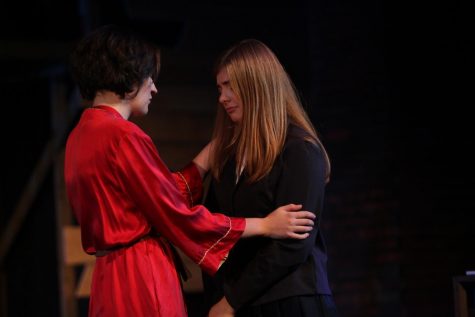
Amelia Tilford, played by senior Eileen King, adresses her daughter Mary Tilford, played by sophomore Emily Walker, about why she has returned home from school early.
“The Children’s Hour” had the audience at the edge of their seats, especially at the end leading up to the suicide of Martha Dobie. The goal was for the audience to leave the show and spark important conversations afterwards. Words are extremely impactful, and the actors hope for the audience to gain that important message and reflect on themselves after seeing the show.
Although audiences only see the actors onstage, so many people involved themselves in both shows for the Fall Festival. Actors, directors, student directors, musicians, stage managers, set designers, stage crew, tech crew, and costume crew all contribute in order to make the shows run smoothly and look magnificent.
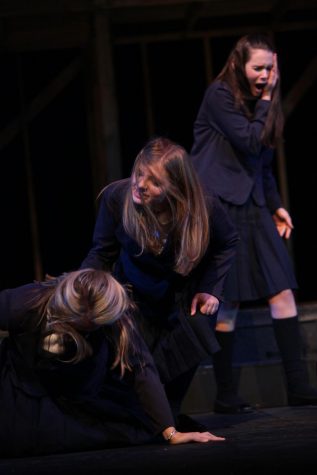
Peggy (junior Helena Kozcur), Mary (sophomore Emily Walker), and Evelyn (sophomore Julia Stone) had “fight call” every night before the show to ensure that their fight not only looked realistic, but was safe for the actors.
“Being on costume crew is a really cool experience because “Next to Normal” takes place in modern day and “The Children’s Hour” in a school in the early 60s, so we get to work with different time periods and a lot different costumes for each show,” said sophomore Amy Vincent, Assistant Costume Director.
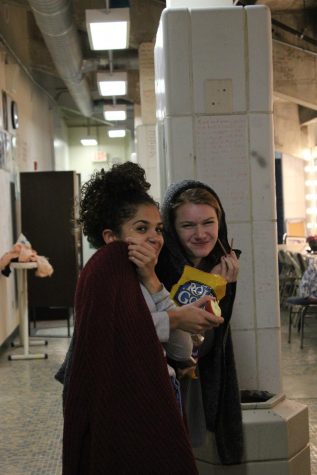
Costume Crew sophomores Gigi Stechschulte and Amy Vincent in the dressing room during the show.
Overall the Fall Festival was a success, putting on two shows with deep, impactful meanings that inspired audiences and shared important messages in only a way that theatre can do.
“When we open up our lives, sons and daughters, husbands, wives, and fight that fight, there will be light.” – “Next to Normal”.


